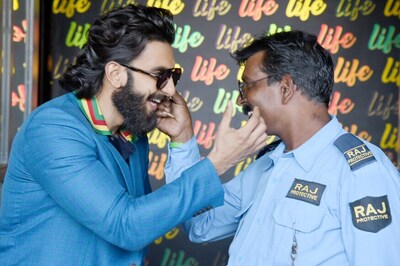
views
Huawei has launched the Mate 30 Pro at an event in Munich, Germany. While the 'Pro' moniker clearly stands for out-of-the-world specifications in today's smartphone parlance, Huawei has taken things up by a notch by offering seemingly overkill features. For starters, one of the Mate 30 Pro's rear image sensors is a 1/1.54-inch sensor, bringing smartphone camera sensors far closer to 1-inch-type sensors than before. While other factors such as 7,680 frames per second slow-mo HD videos, 3D facial scanning with neural engine to recognise gestures, and a steeply curved display with edges bearing pressure sensors sound equally impressive, this apparently all-conquering flagship smartphone comes without one crucial feature that might just kill it, at least in international markets — Google apps.
To be honest, this is not particularly new, since Huawei's ongoing dispute with USA mean that it has been firmly placed in the latter's entities list, and there are no apparent respites in the horizon. Over the past one year, Huawei grew at such meteoric pace that it actually came close to dethroning Samsung at the top of the global smartphone shipments table. A report by Counterpoint Research from May 2019 states that Huawei grew by nearly 50 percent year on year in smartphone shipments in Q1 2019, accounting for 17 percent of the entire world's smartphone shipments without even having a presence in USA, one of the world's largest markets.
This growth was abruptly halted as US President Donald Trump declared a trade and tariff war against Huawei, following allegations of espionage and state-sponsored surveillance against the brand. What followed was a restriction imposed on US-origin companies against conducting business with Huawei, and an important part of that includes Google, the makers of Android.
Today, the Huawei Mate 30 Pro marks the first flagship smartphone launched by Huawei without the all-important Google apps. These include system services such as the Google Play Store, which offers devices millions of apps. Specifications aside, a device in today's world is only as good as the apps that are available to run on it. As a result, Huawei wants you to put your faith in Huawei Mobile Services (HMS), flaunting figures such as 170 countries of operation, over 570 million MAUs (monthly active users) and 180 billion app downloads every year, for you to be convinced that even if you miss Android's apps, there will be enough for you to work with.
If you trust or prefer Huawei as a brand, there's no saying that the Huawei Mate 30 Pro's software won't work for you. You will likely miss the convenience and familiarity of Android's app ecosystem, but if the hardware sounds compelling enough, you will also most likely find an alternate solution to the software and services you use. It is probably this that Huawei itself is hoping, since even its consumer products CEO, Richard Yu, acknowledged that the US/Google ban is the sole reason why its phone now comes with Huawei services, and not because Huawei had a choice between the two.
For the average user, it sounds like a bit of a stretch at the moment. Huawei is investing a billion dollars into R&D to shape up its HarmonyOS as the future of its smartphone business, and the Mate 30 Pro comes as a forebearer of sorts — packed to the hilt with latest generation hardware, with hope that the software somehow works. Until then, not even an APS-C sensor somehow squeezed into a phone's body would save the most over-the-top smartphone hardware that the company can come up with. We've seen the likes of Nokia and Samsung fail with overkill devices, simply because of software. Would Huawei also tread a similar path?




















Comments
0 comment